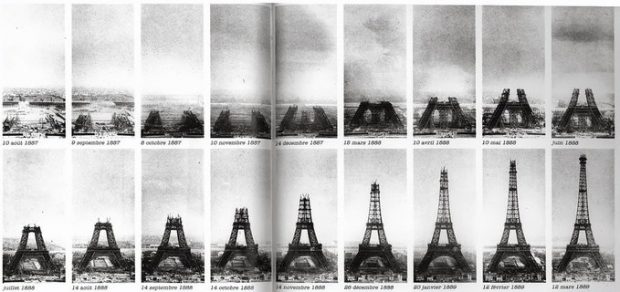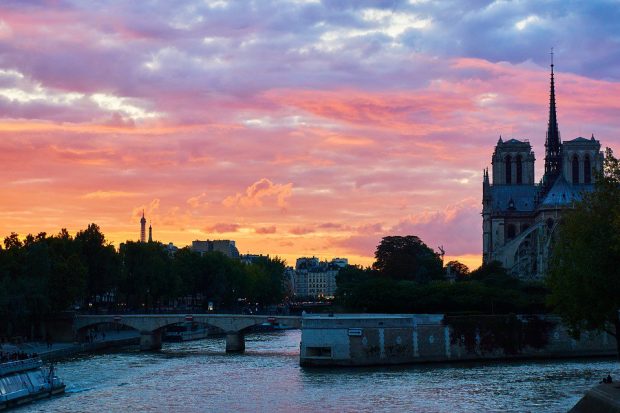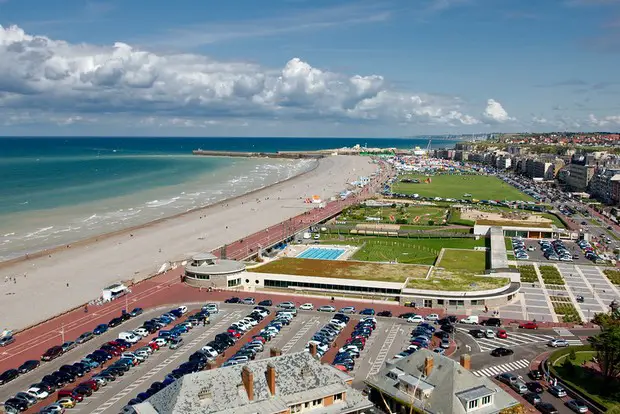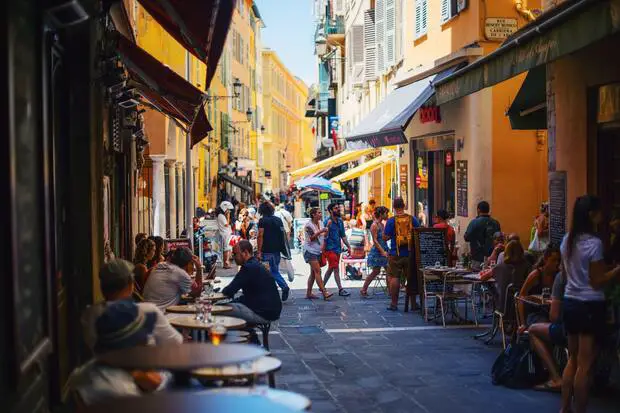Paris is a city full of history, but it is not the only heir of the French legacy! If you want to visit France correctly, you will have to step outside the big cities. To help you out, we have made a list of the most beautiful villages in France. Each of them has its own history and heritage that makes it unique.
1/Cassel
Cassel 59670 (Nord)
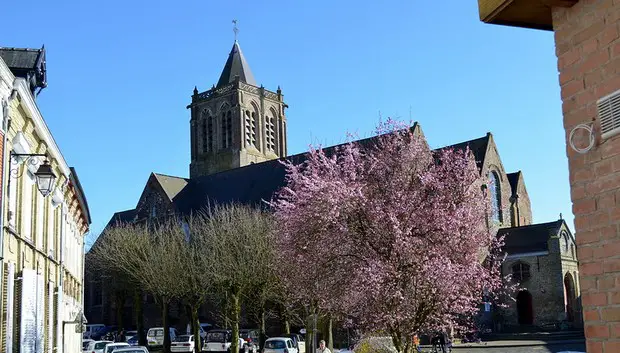
To begin with, here is the French’s favorite village in 2018: Cassel, the Flemish village listed as a historic monument and a UNESCO World Heritage site.
You mustn’t miss its famous old windmill: the Kasteel Meulen (the Castle’s Windmill) one of the only remnants left from the various windmills Cassel had, back in the 20th century.
Foodwise , during your trip you will have the opportunity to visit an “estaminet casselois” to enjoy the best Flemish dishes.
Must See: the Musée Départemental de Flandre
26 Grand’ Place, 59670 Cassel
Located in the Hôtel de la Noble Cour, you will be able to find various Flemish works of art. The architecture will also leave you speechless.
Admire the stunning panoramic view on the Plains of Cassel from the last floor.
Village website (link in French)
2/Saint-Valery-sur-Somme
Saint-Valery-sur-Somme 80230 (Somme)
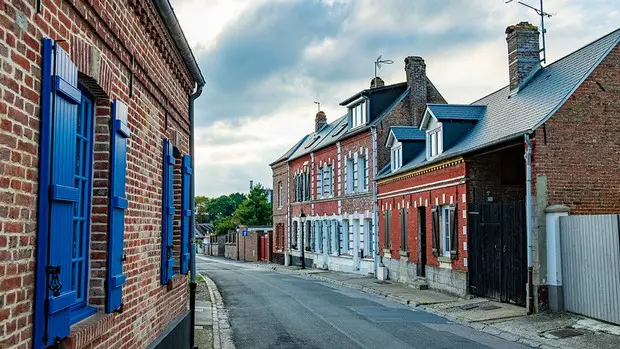
If you want to enjoy an unconventional seaside landscape, Saint-Valery-sur-Somme is where you should go. You will get the chance to wander along a historical yacht harbor dating from the Greek Antiquity.
Enjoy the fishermen’s district of Courtgain before going to the picturesque little port of Crotoy by… train. On this authentic steam train, discover the old seaside railway network and travel back in time with this one-hour trip.
In the village, you will be able to enjoy seafood at a very affordable price as well as Picardy specialties such as “ficelle picarde” or “gâteau battu”.
Must See: La Chapelle des Marins
Rue de la Chapelle, 80230 Saint-Valery-sur-Somme
“La Chapelle des Marins” is said to have been built to be the tomb of the abbot Valery de Leuconay. It is nicknamed the “Chapelle des Marins” (Seamen’s Chapel) because of the weather vane which looks like a seagull instead of a rooster representing the soul of a sailor dead at sea.
Village website (link in French)
3/Gerberoy
Gerberoy 60380 (Oise)
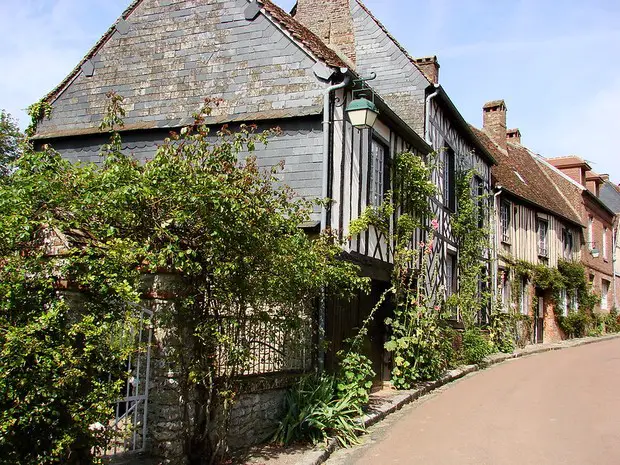
The small village of Gerberoy and its hundred inhabitants played a vital role in French History. Indeed, the “smallest city of France” was a strategic point during the Hundred Years’ War. During the conflict, the village had been besieged five times and dismantled three times.
Stop by the steps of the Saint-Pierre Collegial Church, built in 1015 and rebuilt in the 15th century after it was devastated by the Brits. Since 2007, it has been hosting most of the Music Festival of Gerberoy’s concerts.
Ever since 1928, every year, the Fête des Roses (website in French) is taking place in the village. In June, you can discover one of the “most beautiful villages of France” during a month of animations and parades.
Must See: les Jardins Henri Le Sidaner
7 Rue Henri le Sidaner, 60380 Gerberoy
The ancient fortress is now besieged by beautiful flowers. The painter Henri Le Sidanier has transformed this historical place in a breathtaking garden which you can visit after making a reservation.
Village website (link is in French)
4/Veules-les-Roses
Veules-les-Roses 76980 (Seine-Maritime)
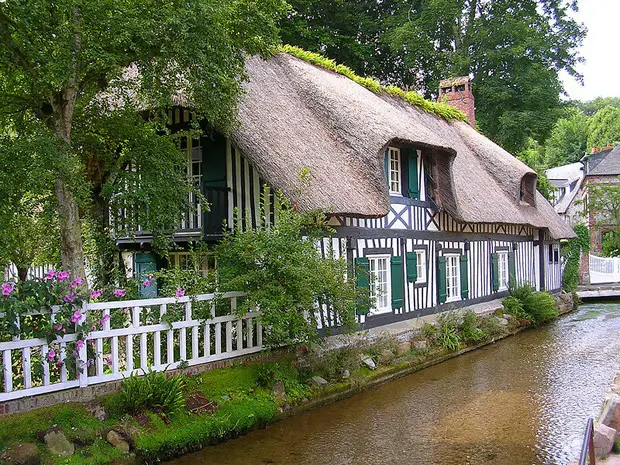
It’s hard to find a more picturesque city than Veules-les-Roses. Wander along the Veules, the smallest river in France. On the way, you will not only see old houses and farms but also four beautiful windmills as well. Your walk will end on the seaside where you will be able to enjoy the sun setting down on the sea.
Fishing is the main activity in this village on Channel coast and, even nowadays, oysters are still the main serving you find in its restaurants.
Must See: Église Saint-Martin
Place de l’Eglise 76980 Veules-les-Roses
Listed as a historic monument in 1996, the Eglise Saint-Martin (website in French), is a three nave building, rebuilt in the 13th century and destroyed in the Hundred Years War leaving only a tower remaining. It has been rebuilt once again in the 16th and 17th centuries and hasn’t changed ever since.
Village website (link is in French)
5/Etretat
Etretat 76790 (Seine-Maritime)
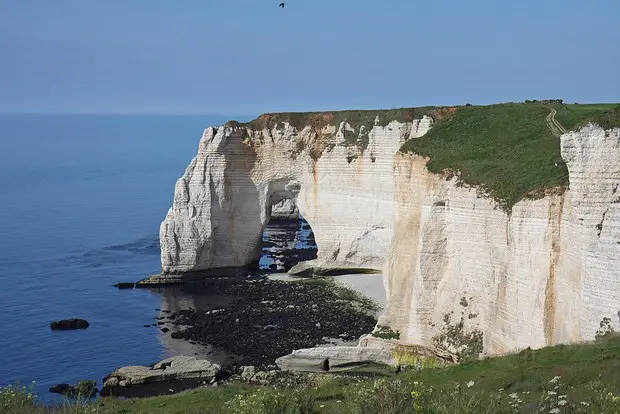
Formerly known for its fishing activity, this village is nowadays one of the most popular villages in the whole country.
One of the most important things that made its reputation is its landscape. This seaside village has a breathtaking rock formation. L’Aiguille Creuse is the star of cliffs and you will be able to reach it following a hiking route.
On the coast, you can wander for a while on the harbor in a relaxing atmosphere and even meet portraitists on the way. Then, it should be time to visit the city’s historic monuments such as the Eglise Notre-Dame or the Abbaye de Montivilliers.
Must See: the Clos Lupin
15 Rue Guy de Maupassant, 76790 Étretat
You might have heard of the name of Arsène Lupin before. Created by Maurice Leblanc; this character has made the village of Etretat popular. It is said that the famous thief would have hidden its treasure inside the Aiguille Creuse.
It is therefore very natural that a museum dedicated to this character has been opened inside the former home of its creator.
6/Locronan
Locronan 29180 (Finistère)
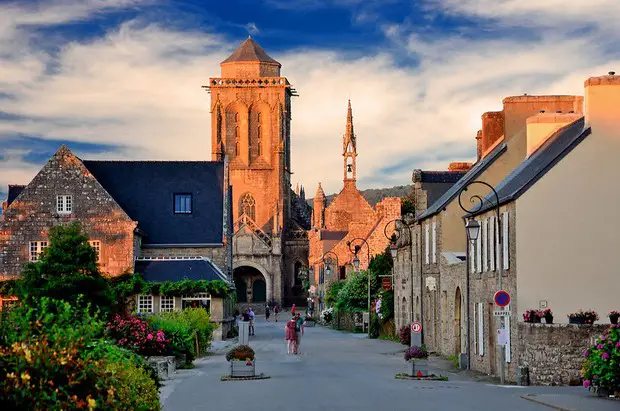
We couldn’t have made this article without mentioning Locronan which is listed as a “petit village de caractère” (small town with nice characteristics) in Brittany and was classified as a historical monument in 1924.
Locronan has always been a place of many cultural traditions. Initially, it used to be an area for druidic cults and “troménies”. Locronan is also home to the traditions of the Arbre de Mai, followed by the Fire of Saint-Jean, and of the Pain de Mort, a bread blessed on November 1th and distributed to the town’s population.
Must See: Église Saint-Ronan
289 Place de l’Église, 29180 Locronan
Old building built from 1430 to 1480, the Eglise Saint-Ronan has the name of the saint buried there. Highly touristic, the place has been used as a movie set in various movies such as “Les Chouans” or “Tess”.
7/Pont-Croix
Pont-Croix 29790 (Finistère)
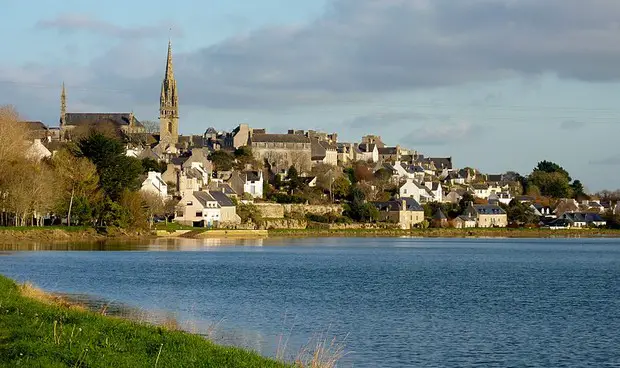
Pont-Croix is a picturesque village with roman-gothic architecture which has barely changed throughout the centuries.
When walking in the city, you will be able to enjoy the unique atmosphere of the biggest streets connecting the city center to the port. You can visit the Musée de Marquisat that brings back to life the daily life of Breton from the last century.
Before leaving, don’t forget to try out the local specialty; the Podig Amann.
Must See: Notre-Dame de Roscudon
Place de l’Église, 29790 Pont-Croix
The Collegial Church Notre-Dame de Roscudon, the historic monument of Point-Croix is well-known for its stunning facade and its impressive stained glasses.
Village website (website in french)
8/Rochefort-en-Terre
Rochefort-en-Terre 56220 (Morbihan)
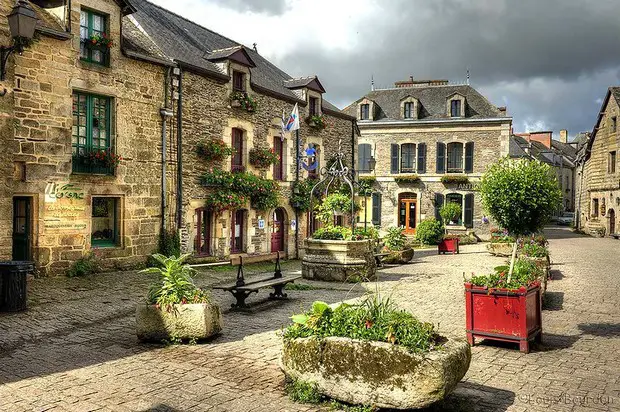
If we are looking for the most beautiful village of France, Rochefort-en-Terre would probably be among the top candidates. The best way to admire its beauty is to go to the very picturesque Place du Puits where various architectural styles show the wide history of the city.
Don’t miss the Eglise Notre-Dame de la Tronchaye and its story. It is said that a statue of the Virgin Mary breastfeeding Jesus has been found in a tree trunk after being hidden there by a villager to protect it from the Vikings. This treasure is beleived to be what determined the location of the church, listed as a historical monument since 1931.
Must See: the Château de Rochefort-en-Terre
14 Le Château, 56220 Rochefort-en-Terre, France
You can’t end your visit of Rochefort-en-Terre without seeing its castle. Even if you can’t visit the inside of the castle, you can still enjoy a guided visit of the Naïa Museum, located in its garden. This museum takes its name from the witch Naïa which is said to have lived in the rumble of the castle and shows pieces of art about some fantasy world.
9/Candes Saint Martin
Candes Saint Martin 37500 (Indre-et-Loire)
Candes Saint-Martin has the name of the bishop Saint-Martin which is said to have died there.
Come enjoy the beauty of its landscapes and cultural areas during a hike in the region or a cruise to admire the Loire.
The village offers several craftsmen’s shops which are always nice to visit as well as a park entirely dedicated to street-art.
Must See: th Collégiale Saint-Martin
Place de l’Église 37500 Candes-Saint-Martin – France
The construction of the Collegial Church Saint-Martin began in 1175 and ended in the middle of the 13th century. After being plundered, destroyed and vandalized twice during the Wars of Religion, and then hit by an earthquake in the 17th and 19th centuries.
In 1840, it was one of the first buildings to be listed as a historical monument.
Village website (website in french)
10/Lavardin
Lavardin 41800 (Loir-et-Cher)
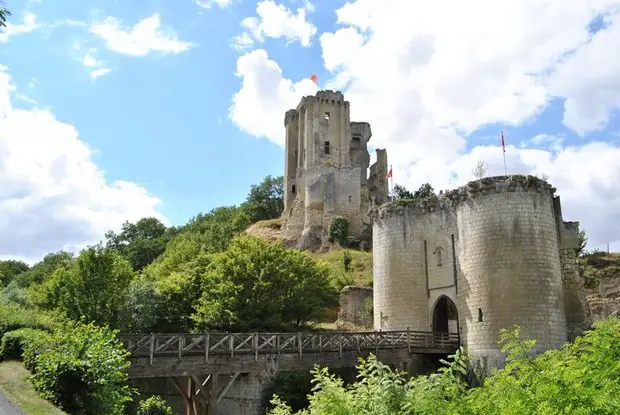
If you are entering Lavardin from the North, stop by the gothic bridge across the Loire to admire the stunning view of the city. The sight of the river, colorful forest and Château de Lavardin will leave you breathless.
The most fascinating places to visit are, without a doubt, the museum located under the town hall, the old houses of the city and the Rotte aux Biques, a road littered with troglodyte caverns.
Must See: the Ruins of the Château de Lavardin
La Grand’ Rue, 41800 Lavardin
You can visit the ruins of this ancient and gorgeous castle built in the 11th century which, among other things, has resisted the invasion of Richard the Lionheart.
Demolished by the Duc de Vendôme (Henry IV), it has never been restored to its former glory but has been listed as a historical monument in 1945.
11/Montrésor
Montrésor 37460 (Indre-et-Loire)
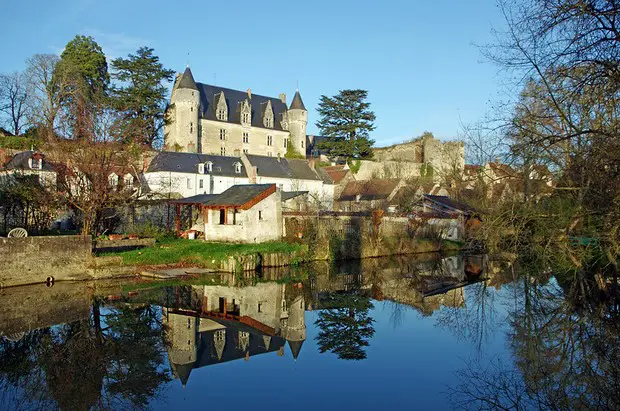
This town, clearly deserves its name (“mon trésor” means “my treasure” in French)! The village of Montrésor got second place at the vote for the most beautiful French village in 2015.
Discover the most stunning views of the village from the Indrois’ balconies. Hiking aficionados will love walking along this two-kilometer path surrounded by water and vegetation. In summer, enjoy a different atmosphere thanks to the park’s sound and light shows; it’s the “Nuits Solaires” (“Sunny Nights”).
For a tasty break, don’t miss the local specialty: a traditional recipe of macaroon dating from the Middle-Age.
Must See: the Château de Montrésor
11 Rue Xavier Branicki, 37460 Montrésor
The Château de Montrésor, built in the 11th century offers luxurious decor and is surrounded by a romantic-style garden.
The castle was used as a hospital during the First World War and was listed as a historical monument in 1996.
Village website (website in french)
12/Rocamadour
Rocamadour 46500 (Lot)
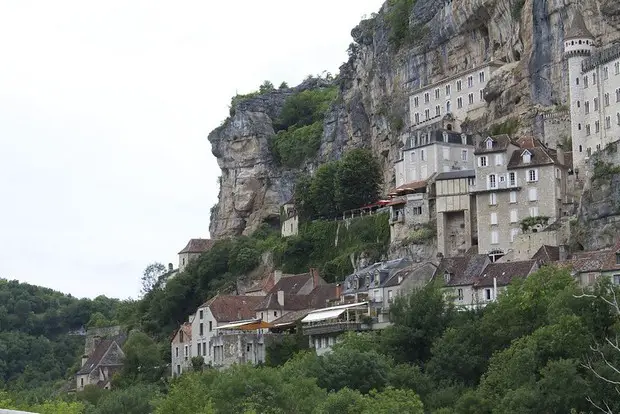
Rocamadour is not only one of the French’s favorite villages, but it’s also a “sanctuary-village”. Also called the “Cité Sacrée” Rocamadour is, indeed, a crucial stop on the Way of Saint-James of Compostela.
Its origins seem to run back to Prehistory, as seen with the mural paintings of the Grotte Préhistorique des Merveilles.
The city’s ramparts, vestiges of the 14th century, are a must-see: from there, you will be able to enjoy a stunning view on the entire village.
Rocamadour is also a fantastic place for animal lovers with the Rocher des Aigles (eagle rock) and the Forêt des Singes (monkey forest).
Must See: the Sanctuaire Notre-Dame de Rocamadour
Rue de la Mercerie, 46500 Rocamadour
Walk up the stairs and its 216 steps to access a whole new world. From the Basilique Saint-Sauveur to the Crypte Saint-Amadour and the Chapelle Saint-Michel and seven other chapels, you will have a lot to discover in this religious sanctuary.
The icing on the cake would be inside of the Chapelle de la Vierge where you can see the gorgeous Vierge Noire (Black Virgin Mary) of Rocamadour.
13/Saint-Cirq-Lapopie
Saint-Cirq-Lapopie 46330 (Lot)
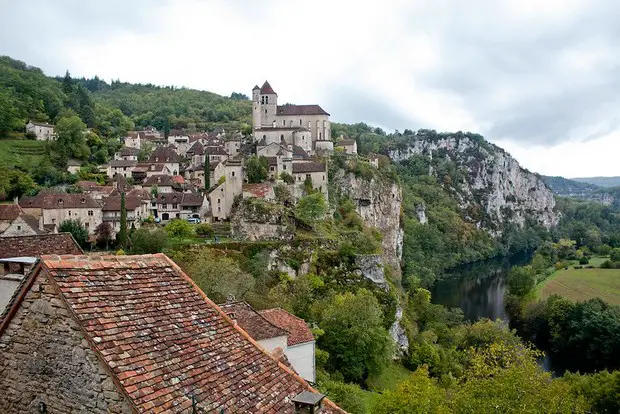
Without a doubt, this is most impressive village of this list; Saint-Cirq-Lapopie has everything you can love and was the French people’s favorite village in 2012. The village is home to thirteen historical monuments. There are still some houses dating from the 12th to 15th centuries. The castle ruins are also something you won’t want to miss.
The Chemin de Halage offers a beautiful view with its wall sculptures and soothing river.
Must See: Église Saint-Cirq-et-Sainte-Juliette
Le Bourg 46330 Saint-Cirq-Lapopie
The church -which used to be a chapel- is dedicated to Saint-Cirq, the youngest martyr, and to her mother, Sainte-Juliette. Built in the 16th century and rebuilt several times since then, the building was listed as a historical monument in 1911.
14/Cordes-sur-Ciel
Cordes-sur-Ciel 81170 (Tarn)
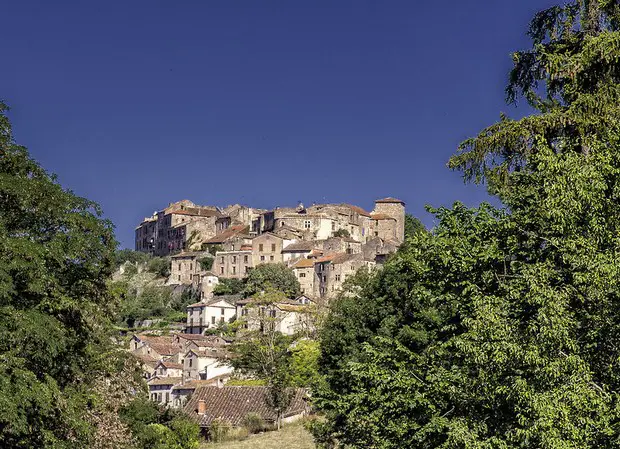
Cordes-sur-Ciel was votes “the French people’s favorite village” in 2014 and even the famous writer Albert Camus talked about the place, saying that: “A Cordes, tout est beau, même le regret.” (in Cordes, everything is beautiful, even regrets)
One of the things he loved most was likely the pink fog you can admire in the morning which makes the village seems like it is floating in the sky, thus giving the fog its name.
Come walk along its ramparts and gothic facades while eating a tasty “croquant de corde”, a dessert made with sugar, almonds and eggs.
Must See: Église Saint-Michel
22 Place Saint-Michel, 81170 Cordes-sur-Ciel
Step inside this stone church and its huge tower. Even if the outside can seem small, you will be stunned by the beauty and the splendor of its pillar rooms.
15/Saint-Guilhem-le-Désert
Saint-Guilhem-le-Désert 34150 (Languedoc-Roussillon)
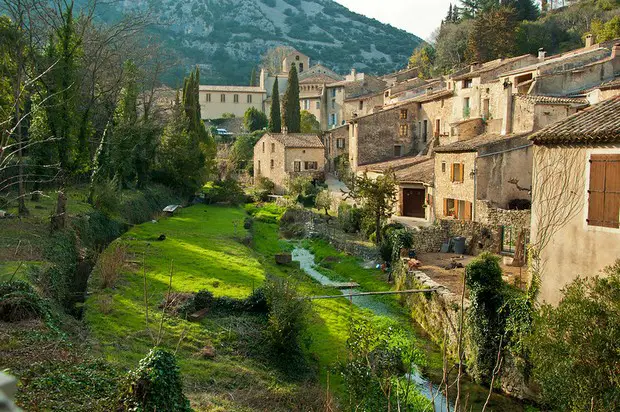
Saint-Guilhem-le-Désert was built in 804 in a place far from all other civilizations by Saint-Guillaume.
Every day of the year, pilgrims walking the Walk of Saint-James of Compostela across this treasure of Roman art. Come visit the beautiful abbey on your own or follow a tour guide. Several holy relics -including the incredible Holy Cross- will be awaiting you inside
Walk along the streets of this real medieval town and enjoy the peaceful atmosphere while sitting down at a flowery terrace.
Must See: the Château du Géant
18 Rue Corniche de Nostra Dona, 34150 Saint-Guilhem-le-Désert
Standing proudly on top of the mountain next to the village, the Château du Géant is the other thing-to-see during your visit at Saint-Guilhem-le-Désert.
Its name comes from the tale saying that a giant used to live in the castle before getting banned by Guilhem. Nowadays, you can’t visit the ruins, but you can enjoy the view from afar.
16/Les Baux-de-Provence
Les Baux-de-Provence 13520 (Bouches-du-Rhône)
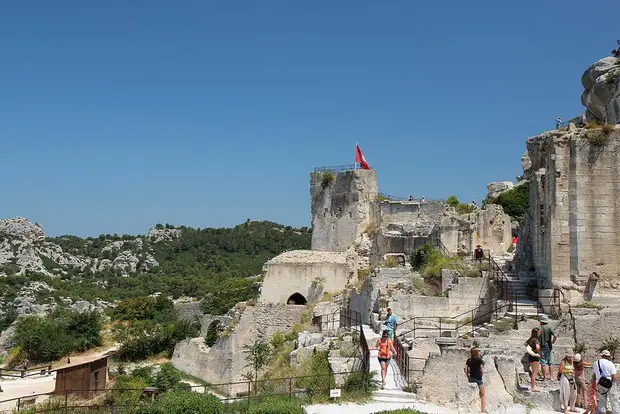
Les Baux-de-Provence is a village located inside the Parc Naturel Régional des Alpilles and built in 1821 after the discovery of bauxite, a rock with a high amount of aluminum.
In the city’s park, come and admire the “Carrières des Lumières” a cluster of visual and sound spectacles exposing famous artists such as Van Gogh and Picasso.
The Eglise Saint-Vincent will dazzle you with its Roman style and enormous stained glasses built in the 13th century.
Must See: the Château des Baux de Provence
Château des Baux de Provence – 13520 Les Baux de Provence
The Château des Baux de Provence is located on the highest hill of the village. Built in the 16th century, then demolished and rebuilt several times, there are now only ruins left of the castle.
17/Èze
Èze 06360 (Alpes-Maritimes)
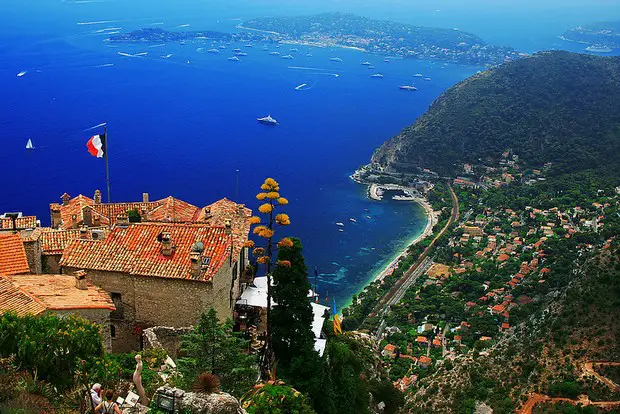
Eze is a stunning village offering a beautiful view on the sea which is a great place to visit in Spring before tourists take over the city.
Its orange and yellow Mediterranean architecture and cobblestone streets, aged of over 1500 years, won’t fail to amaze you.
Located not far from Nice, Eze welcomes you inside the Fragonard and Galimar perfumeries. If you’re lucky, you may even find the mobile tea house, Le Café Qui Roule, where you will be able to sit down and enjoy the peace and quiet.
Must See: the Jardin Exotique
20 Rue du Château, 06360 Èze
Eze welcomes you in its sumptuous exotic garden located next to the steps of the city castle. Enjoy its colorful flora and clear view on the horizon. A must see!
18/Peillon
Peillon 06440 (Alpes-Maritimes)
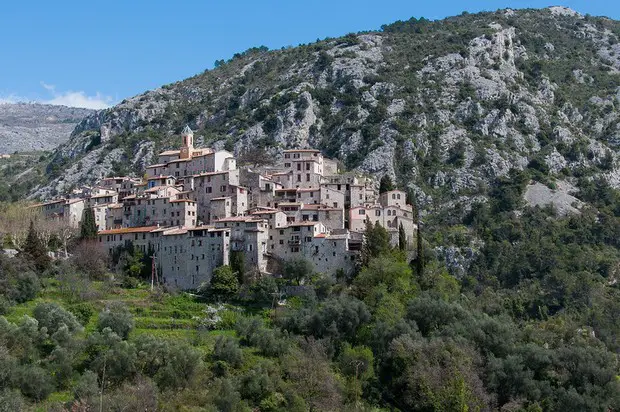
Peillon is a city which was first mentioned in 12th century texts, but some think it could have been lived in ever since Prehistoric times.
While still unknown to most, this paradise will offer the perfect setting for quiet walks and hikes or exciting rock climbing sessions.
The Chapelle des Pénitents Blancs, located below the village exhibits murals from Giovanni Canavesio dating from the 15th century.
Must See: Église de la Transfiguration
Montée de l’Église, 06440 Peillon
Also called the “Eglise Saint-Sauver”, this church was originally a Roman church dating from the 12th century. However, the 15th century this small church was buried under a bigger and more prestigious church.
Village website (french version)
19/Moustiers-Sainte-Marie
Moustiers-Sainte-Marie 04360 (Alpes-de-Haute-Provence)
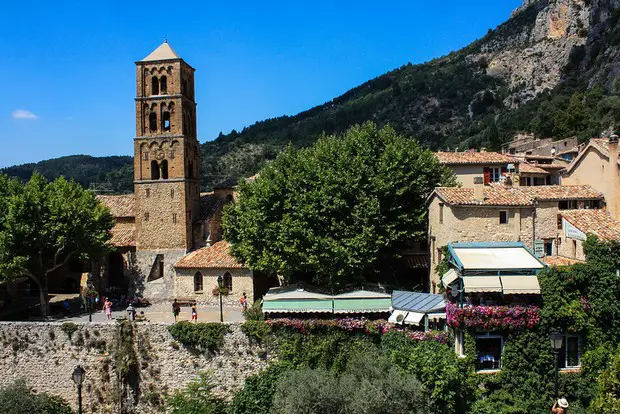
The village of Moustiers-Sainte-Marie is located inside the Parc Naturel Régional du Verdon, inside the UNESCO Géoparc de Haute-Provence, offering a green environment such as you have rarely seen.
The village has had earthenware and olive growing cultures since the Bronze Age. Even nowadays, in its restaurants, you can enjoy some tapenade made from the local olives or you can visit the Musée de la Faïence.
Must See: the Chapelle Notre-Dame de Beauvoir
Moustiers-Sainte-Marie 04360 (en hauteur)
Built on top of an old marital temple dated from 470, the Chapelle Notre-Dame de Beauvoir offers a breathtaking view on the village and its landscapes.
You can access this historical place following a hiking route beginning in Moustiers-Sainte-Marie.
20/Saint-Véran
Saint-Véran 05350 (Hautes-Alpes)
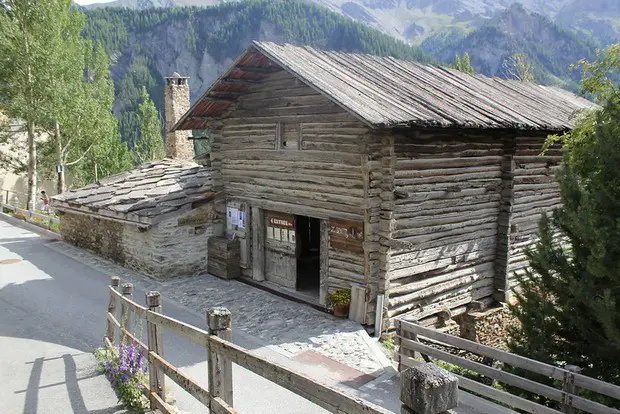
If you like skiing, Saint-Véran, the highest village in Europe, is the place for you. Here, you will be able to follow several hiking routes in the beautiful and sometimes snowy setting of the Parc Naturel du Queyras.
Wander in the streets of one of the “most beautiful villages of France” while admiring the charming wooden cottages which are very popular in that region. One of the village’s most famous building, dated from the 17th century, is now a museum you can visit to learn more about the village and its region.
Saint-Véran became prosperous throughout the centuries thanks to its copper mines; visit the Mine de Cuivre des Clausis and its authentic atmosphere.
Must See: the Maison du Soleil
Le Bouticari – Le Châtelet, 05350 Saint-Véran
We call Saint-Véran the “place where roosters peck the stars” because of its high-altitude setting.
Astronomy lovers and other curious people are welcomed at the Maison du Soleil (website in French). There are guided visits about the sun, the stars, the light and colors, as well as many more attractions for the young and old are waiting for you!
21/Pérouges
Pérouges 01800 (Ain)
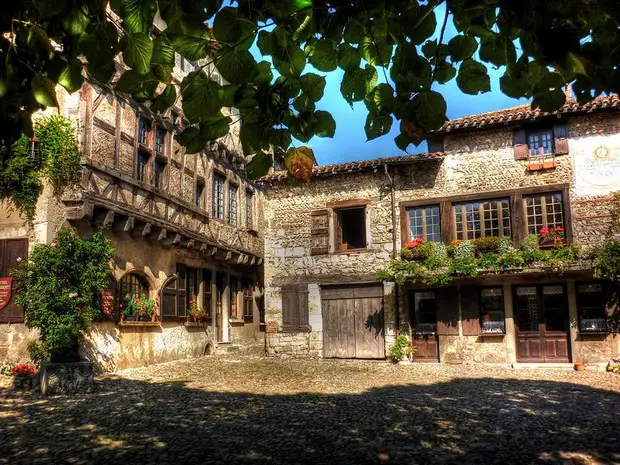
Pérouges is a charming medieval village located 40 minutes away from Lyon.
The medieval city was built between the 13th and 14th centuries where there used to be a castle which is now completely gone. You just can’t visit the city without admiring the remains of the city’s fortifications and its Porte d’En Bas and Porte d’En Haut.
After your walk, come and relax at the terrace of one of the local restaurants to enjoy a “galette de Pérouges”, a sweet pie -a local specialty.
Must See: Église Sainte-Marie-Madeleine
5186 Rue de la Porte d’En Haut 01800 Pérouges
Just next to the Porte d’En Haut is the fortified church of the village. This place of worship built in the 15th century is dedicated to Saint Mary-Magdalene. You can admire its detailed gothic architecture bringing you back to the Middle-Age.
22/Plombières-les-Bains
Plombières-les-Bains 88370 (Vosges)
Located in the Vosges, at an altitude of 420 meters, the “thousands balconies town” is a lovely thermal village which has been host to many famous visitors throughout the centuries: Louis XV, Napoléon Bonaparte, Montaigne, Voltaire, Alfred de Musset and Goya…
Plombières-les-Bains is impressive due to its many terraced gardens which you will enjoy visiting under the warm sun.
The village also has its fair share of mini-parks with scale models of castles and monuments, as well as a mini-golf.
Must See: the Spa Balnéo Romain Calodaé
Avenue des Etats-Unis, 88370 Plombières les Bains, France
The Spa Balnéo Romain Calodaé is one of the most prestigious spa in this thermal station with its thermal baths filled with water appreciated due to its medical virtues.
In this historical place dating from the Roman Era, you will be able to get massages in a sumptuous room decorated with mosaics.
Village website (website in french)
23/Eguisheim
Eguisheim 68420 (Haut-Rhin)
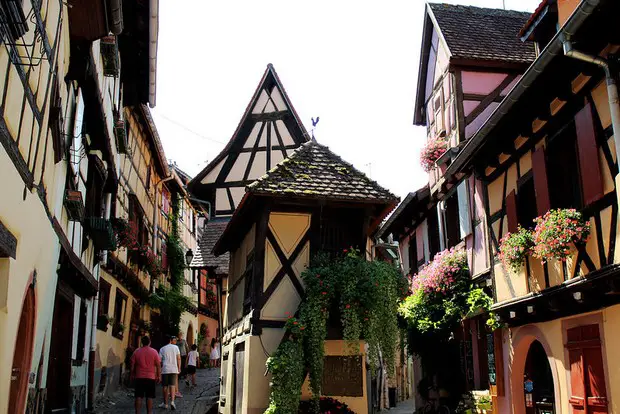
Eguisheim was elected as the French people’s favorite village in 2013 and is still nowadays one of the “most beautiful villages in France”.
Come enjoy its typical Alsatian architecture and its vineyards and wine cellars created during the Roman Era. During the Christmas period, don’t miss its Christmas market, one of the most beautiful in Alsace.
The village has three dungeons built with Haut-Eguisheim’s pink sand-stones and located at an altitude of 591 meters. The three buildings used to form a castle which is now destroyed.
Must See: the Château de Saint-Léon-Pfalz
4 Place du Château Saint-Léon, 68420 Eguisheim
Located in the city center, come and discover the Château de Saint-Léon-Pfalz. In its garden, admire the gorgeous aforenamed fountain and the Chapelle Saint-Léon IX.
24/Riquewihr
Riquewihr 68340 (Haut-Rhin)
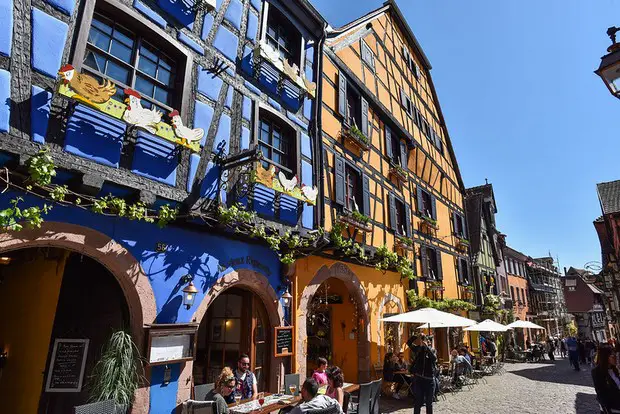
A very prosperous medieval town back in the 17th century, Riquewihr also has a sumptuous Alsatian Christmas market.
In spring, the city starts to bloom and offers a gorgeous and colorful setting. Several vineyards and wine caves can also be visited as well as three of Ribeauvillé’s castles, located just on the border of the village.
As for local specialties, try out Riquewhir’s famous choucroute which you can enjoy in the Brasserie du Vignoble, with a beautiful sight on the agricultural holdings.
Must See: the Old Town
Vieille Ville, 68340 Riquewihr, France
More than a simple monument, it’s all of Riquewhir’s old town which you will have to visit during your trip here. Wander along its Alsatian streets with sculpted buildings and inner yards hosting old wells and fountains.
The Musée du Dolder, is the historical symbol of the village just as its Tour des Voleurs and Maison des Vignerons.
25/Kaysersberg
Kaysersberg 68240 (Haut-Rhin)
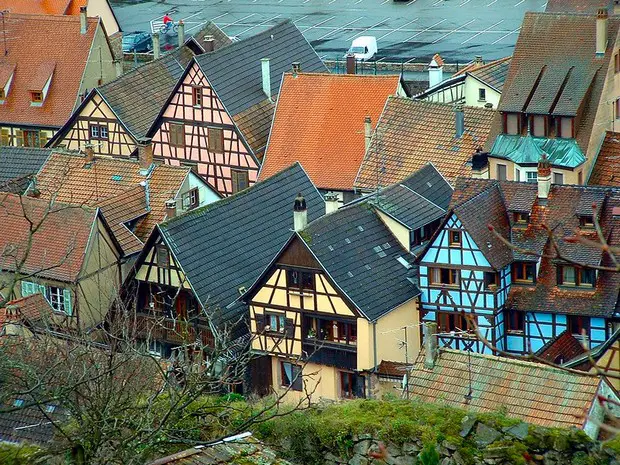
Welcome to one of the most flowery villages in Alsace and also the bearer of the title of “French people’s favorite village” in 2017. Fun fact: the trophy actually got stolen just a few weeks after the ceremony.
This village got built around the Schlossberg castle, built in the 13th century. The Musée Mémorial du Linge honors the memory of the 17.000 fallen German and French soldiers during a battle nearby.
Finally, if you are visiting the city during winter, don’t miss the beautiful Kayserberg Christmas Market.
Must See: Église de l’Invention-de-la-Sainte-Croix
41 rue du General de Gaulle, 68240 Kaysersberg, Kaysersberg-Vignoble, France
It is hard to miss this sumptuous church, built in bricks, and its unique bell tower. This is where the tomb of the wife of the world-famous musketeer d’Artagnan, Anne-Charlotte de Chanlecy is held.
I aim to share my tips and recommendations for the beautiful country of France. My goal is to help you plan your next adventure, whether it’s a weekend getaway or a once-in-a-lifetime trip. From finding the best hotels and restaurants, to discovering unique activities and sights, I’ve got you covered!

